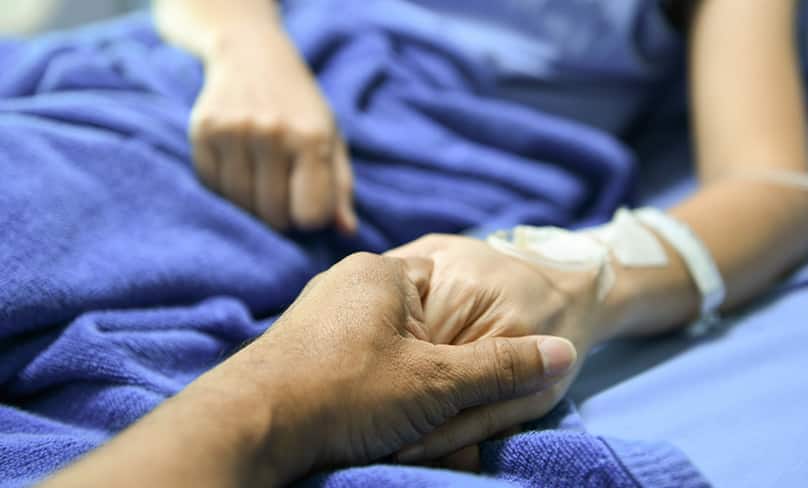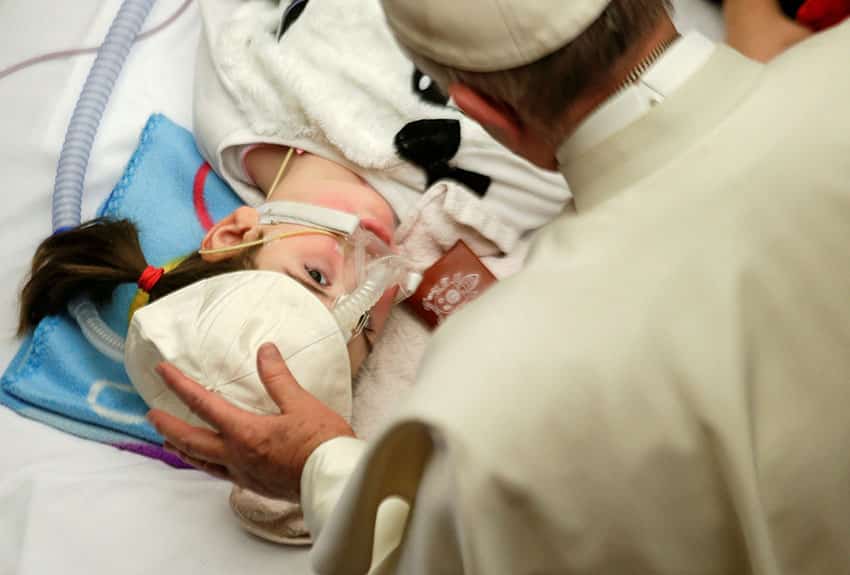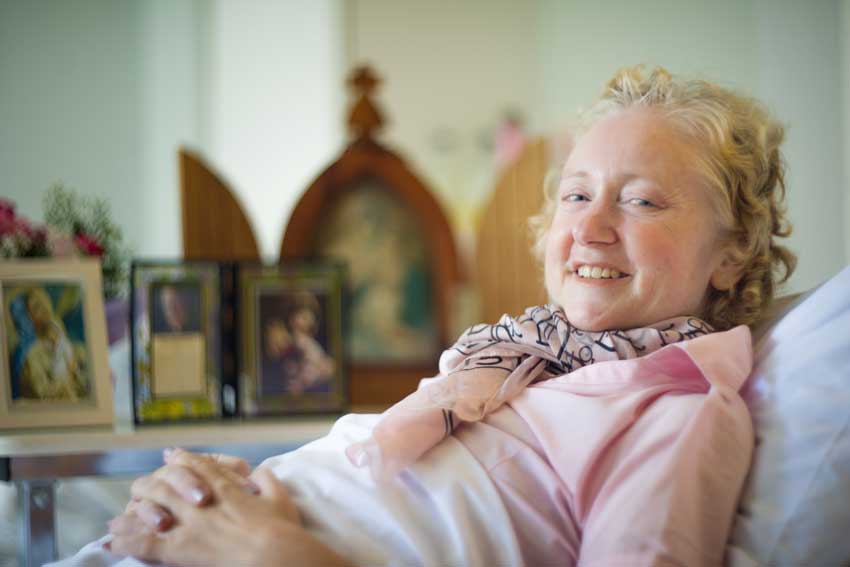
Withdrawing artificial delivery of food and water to patients can be ethically complex
It can be unethical to withdraw artificial hydration and nutrition and doing so can constitute a form of euthanasia — that is, when it’s withdrawn with a primary intention to cause death. But withdrawal is not always unethical. Just as there are situations where it is justified to turn off a ventilator, so too there can be situations where it is justified to withdraw artificial hydration and nutrition.
Australia’s ABC network recently reported a story of an elderly South Australian woman with dementia and breast cancer, who was not mentally competent and was being given hydration and nutrition through a nasogastric tube.
The tube “fell out” and the Public Advocate, who was the legal guardian of the patient and decision maker for her, determined that it should not be replaced. The reasons given included that the tube was burdensome, that it was prolonging suffering, and that replacing it would be contrary to the presumed wishes of the patient — which is to say, if she were able to decide for herself, she would refuse replacement.
Two of the patient’s daughters, a Catholic bishop and the patient’s Catholic priest all disagreed with the Public Advocate’s decision and sought to change it. The daughters argued that the patient would want to live as long as possible and that replacing the tube was consistent with her Catholic faith.

The tube was not replaced, and the patient died five weeks later.
Now, despite being a truism, a very important principle in applied ethics is that good facts are essential for good ethics. The story as reported does not provide sufficient facts to judge whether or not the cessation of artificial feeding by means of a nasogastric tube was an ethically acceptable decision.
It’s worth noting that hydration was not withdrawn, but was delivered by intravenous line. So a pertinent question is: what justification was there for withdrawing nutrition, but not hydration? Either both hydration and nutrition were ethically appropriate life-prolonging treatment, or neither were.
One reason for the different approach to hydration as compared with nutrition could be that delivering total parenteral nutrition is a far more invasive procedure and more burdensome for the patient than, as occurred in this case, delivering hydration by way of an intravenous drip. The hydration might also have been continued as “comfort care” rather than “life-prolonging treatment”.
Potential trauma suffered by loved ones can also be considered
I was once consulted on a comparable case.
A young woman, who was diabetic and on haemodialysis for kidney failure, had a sudden cardiac arrest. She was revived and placed on a ventilator, but several days later, when she was due for dialysis, was diagnosed as being in a deep and irreversible coma.
Her parents decided that she should not receive dialysis, but they did not want the ventilator to be removed. We complied with their wishes in order to avoid further suffering to them, not because we believed it was necessary treatment for the young woman. We explained in the case notes that was the reason the ventilator was continued. The young woman died a natural death from renal failure, at which time the ventilator was stopped.
What often causes great emotional trauma for a patient’s family, as was true in the South Australian case, is the thought of starving and dehydrating the patient to death in withdrawing artificial hydration and nutrition. There is, however, research that shows the hunger and thirst mechanisms in our brains shut down when we are dying.
The reflections of the Catholic Church on medical ethics are a frequently used reference point for bioethicists around the world. Even if they reject them, bioethicists respond to its concerns. This is especially true in a case such as the one we are considering, in which the patient and her carers are of that faith.
Catholic Church teaching on food and fluids at the end of life
The Catholic Church teaches that food and fluids must always be offered and supplied if the person can take these orally. Pope John Paul II (now Saint Pope John Paul II) declared in a 2004 address that the same requirement of mandatory provision applies to artificial hydration and nutrition for people in a permanent vegetative state — that is, hydration and nutrition not taken orally but delivered by other means.
With great respect, I believe that this statement needs to be nuanced. In that particular document it’s clear that the Pope wanted to protect vulnerable patients receiving artificial hydration and nutrition who are in a stable medical condition.
There are thousands of such patients in nursing homes and they have a right to humane basic care, as the Pope says. But the Pope might not have been thinking of the acceptability of withdrawal of artificial hydration and nutrition from all patients in a permanent vegetative state.
One problem is that if we apply this criterion to all such patients, it actually supports the euthanasia movement, as I shall explain below. But let me first attempt to make some distinctions that could help us to decide when withdrawal of artificial hydration and nutrition is ethical and when it is not.
It depends, first, on how we classify artificial hydration and nutrition: as simply “food and water,” or as “medical treatment for a failed alimentary system” (just as a ventilator is medical treatment for a failed respiratory system). If it’s just “food and water” and basic care, then ethically it must be provided. If it is medical treatment, that is not always the case.
When withdrawal is justified
I propose that, just as there are situations where it is justified to turn off a ventilator, so too there can be situations where it is justified to withdraw artificial hydration and nutrition. Both are forms of medical life-support treatment. And what if, for instance, a PEG feeding tube is painful or has become infected? What should doctors do then?
One distinction that is sometimes made in order to determine whether a given medical treatment must be offered is whether the intervention is “ordinary” or “extraordinary” medical treatment. The Catholic moral teaching is that the former must be provided, whereas the latter need not be.
Bishop Gregory O’Kelly is quoted as saying in his letter to the Office of the Public Advocate that, “To deny food or drink, no matter how it is delivered, to such a person is to deny them ordinary [emphasis added] means for sustaining life.”
But this distinction between ordinary and extraordinary medical treatment is not always clear cut. It can be that the patient’s quality of life is being judged and not the treatment. When a patient is in very fragile health in ICU, a certain treatment can be judged as “extraordinary”; but when the patient improves and is living in a nursing home, the same treatment for the same person can be characterised as “ordinary.”

In short, circumstances need to be taken into account. Moreover, whether a treatment is judged ordinary or extraordinary can be a very subjective and discretionary decision, which can leave it open to abuse.
Justifications for withdrawing life support treatment include that withdrawal is required to respect a patient’s right to refuse medical treatment, including through an “advance directive” — that is, withdrawing treatment is required in order to respect a patient’s rights to inviolability (the right not to be touched without one’s informed consent) and competent patients’ rights to autonomy.
Artificial hydration and nutrition would not be forcibly imposed on such a patient. Justifications also include: that the treatment is medically futile; that the burdens of continuing treatment outweigh any benefits; and that the treatment is prolonging dying, not living.
The Public Advocate described the patient in question as “pre-terminal,” which might or might not mean that she was dying, although her daughters denied that she was. With respect to the burden of the nasogastric tube, they are admittedly very uncomfortable, but it’s at least an open question whether the suffering involved for the patient could have justified not replacing it. Further questions include how the tube “fell out” (did the patient pull it out?) and whether, if the tube had not “fallen out,” its removal would have been justified?
To repeat, these decisions about providing or withdrawing artificial hydration and nutrition can be very difficult ones in relation to determining the right ethical path to take. Every case (and person) is different; assessments must be made on that basis and, importantly, in the light of all the relevant facts.
As I said, advocates of legalising euthanasia use cases such as the one described in the ABC report to promote their cause. They argue that withholding artificial hydration and nutrition is euthanasia — often called “slow euthanasia” or “passive euthanasia”; therefore, we are already practising euthanasia and, if we are to be consistent, should recognise the legal right to do so by means of lethal injection.

Consequently, people who oppose the withdrawal of artificial hydration and nutrition when this withdrawal could be justified, and object to such a withdrawal on the grounds that it would be euthanasia, sadly help the pro-euthanasia cause.
Moreover, when members of the public think euthanasia is any failure to use all possible means to prolong life and believe that all refusals of medical treatment that could prolong life are euthanasia, they respond positively to survey questions that ask, “Do you agree with legalising euthanasia?” — because they want to have the right to refuse treatment. The public’s responses are even more compromised when asked, “If someone is in terrible pain and suffering should they be able to consent to euthanasia?”
The option of saying “yes” to fully adequate pain and suffering management and “no” to euthanasia — adopting a position that we must kill the pain and suffering, but not the person with the pain and suffering — is often not possible in surveys. They tend to pose conjunctive questions (rather than two disjunctive ones) that is, “do you agree with fully adequate pain and suffering management” and as a separate question, “do you agree with euthanasia?”.
It bears always keeping clearly in mind when discussing withdrawal of artificial hydration and nutrition that it can be employed unethically, when it does become a form of euthanasia — that is, when it’s used with a primary intention to cause death.
This is most likely to occur when it is paired with an unwarranted use of “palliative sedation,” where the patient is unjustifiably deeply sedated until they die. Such a use is better called “terminal sedation” to differentiate it from the ethical use of “palliative sedation”, that is, when sedation is necessary and used appropriately to relieve a patient’s pain and suffering and not to hasten their death.
Margaret Somerville is Professor of Bioethics in the School of Medicine and the Institute for Society and Ethics at the University of Notre Dame Australia.
This article was originally published at Mercatornet.com.
Related articles:
Sisters’ struggle reveals risk to disabled elderly
ACSJC head backs aged care crackdown
